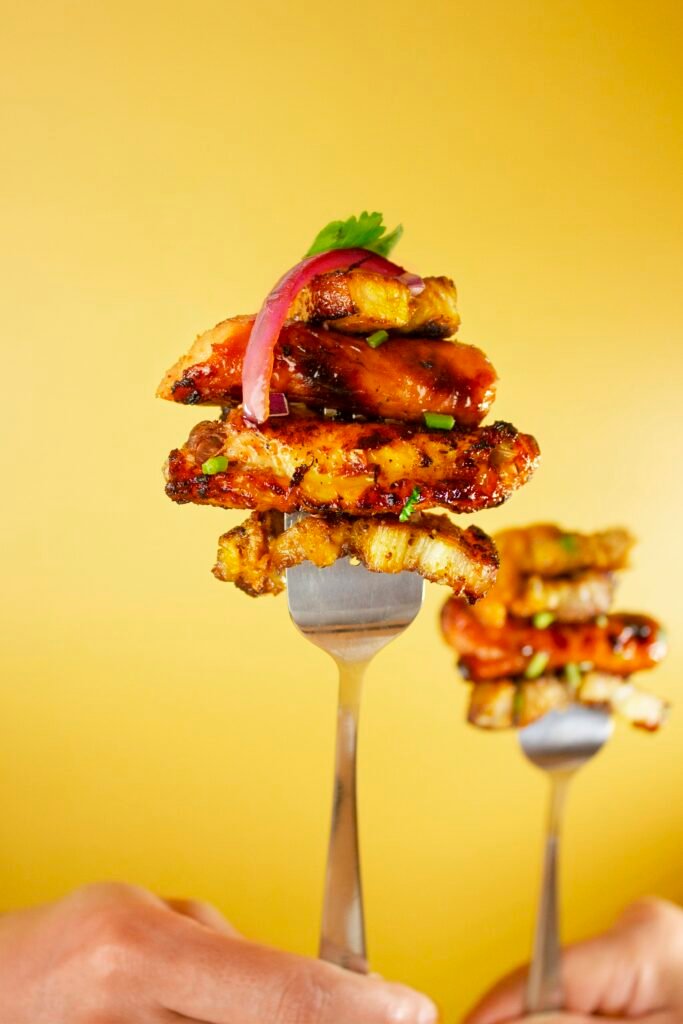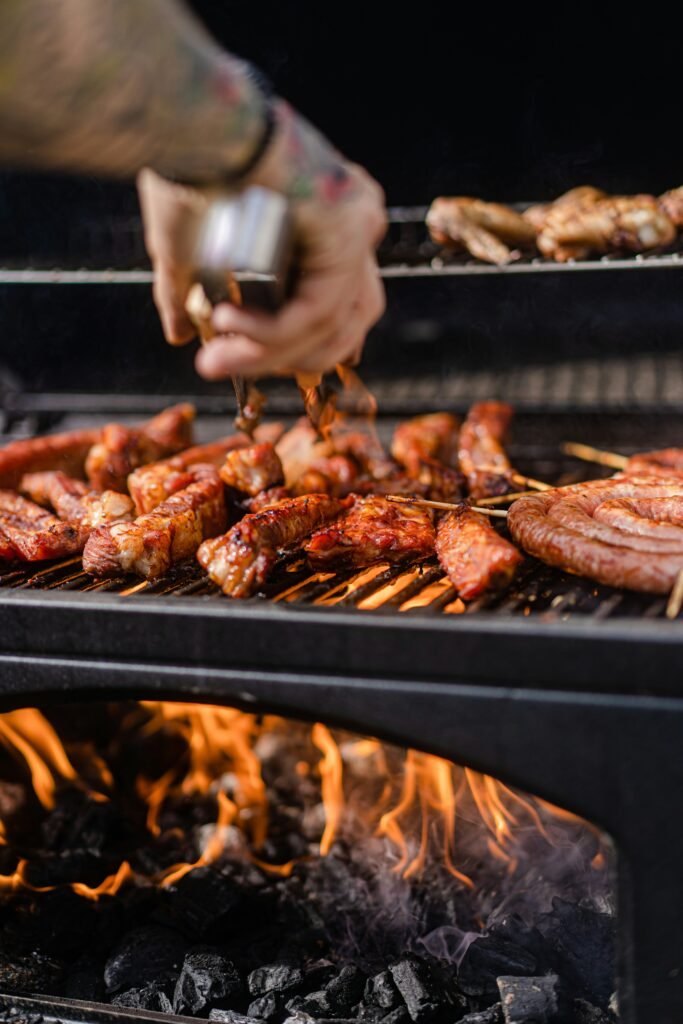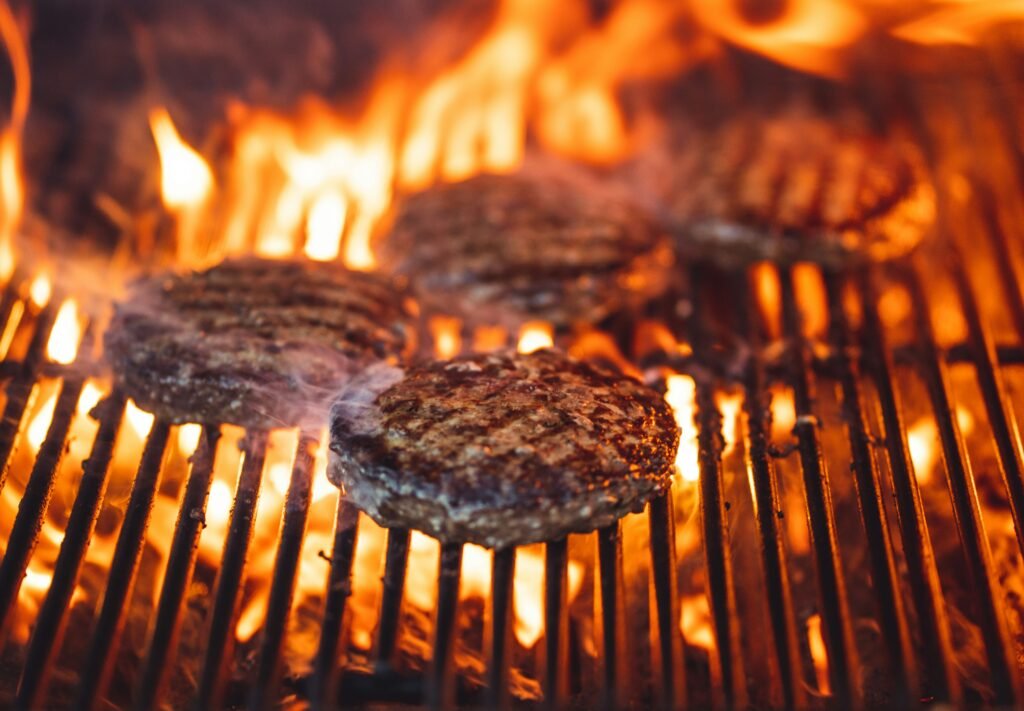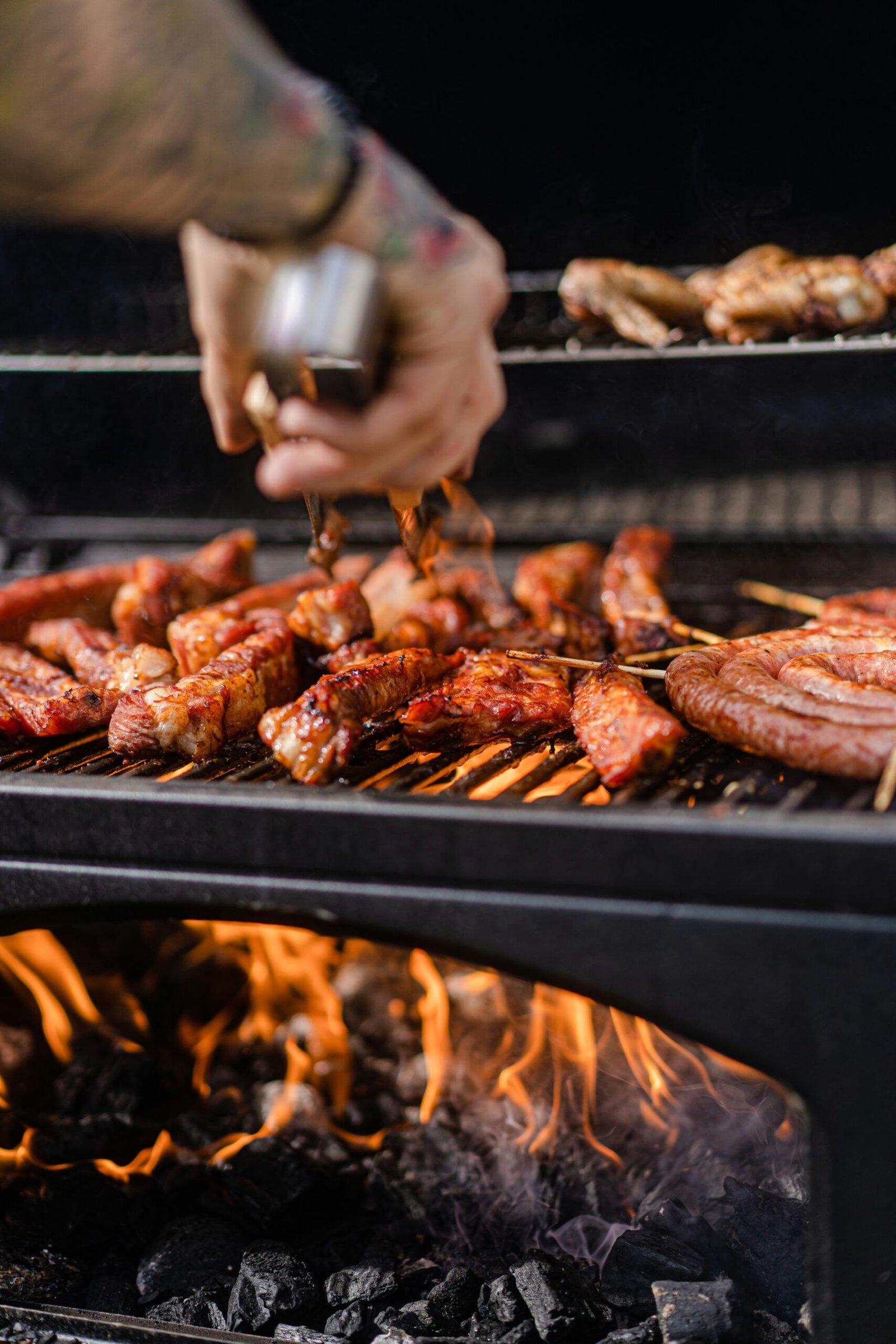Are you one of those grill enthusiasts who yearn for that mouthwatering smoky flavor in your grilled dishes but feel limited by using a gas grill? Well, worry no more! In this article, we will explore some simple yet effective techniques to help you achieve that irresistible smoky flavor on your gas grill. From using wood chips to creating a makeshift smoker box, we’ve got you covered. So, get ready to elevate your grilling game and delight your taste buds with that delectable smoky taste right from your gas grill.

Understanding the Gas Grill
Gas grills are a popular choice for outdoor cooking due to their convenience and ease of use. Understanding how gas grills work is essential for achieving the desired results.
How gas grills work
Gas grills use either propane or natural gas as fuel to generate heat for cooking. When the burners are ignited, gas is released from the fuel source and mixed with air to create a steady flame. This flame heats the cooking grates, allowing you to grill your food.
One advantage of gas grills is their ability to heat up quickly, allowing you to start cooking in just a few minutes. Moreover, gas grills offer excellent temperature control, allowing precise adjustments for different types of food.
Understanding the difference between propane and natural gas grills
Propane and natural gas grills are the two main options available for gas grilling. Propane grills use propane gas, which is stored in portable tanks. These grills offer flexibility, as they can be easily moved around and used in various locations.
On the other hand, natural gas grills are connected to a natural gas line in your home or outdoor kitchen. This eliminates the need to refill tanks regularly. It is worth noting that converting a propane grill to natural gas or vice versa can be challenging and should be done by a professional.
Importance of temperature control in gas grills
Temperature control is crucial when using a gas grill to achieve the perfect smoky flavor. Different types of food require specific temperature ranges for optimal cooking. Gas grills allow you to adjust the heat to suit your needs accurately. Maintaining a consistent temperature ensures even cooking and prevents food from drying out or becoming overcooked.
Designing the Grilling Plan
Creating a grilling plan is essential to achieve the best results on your gas grill. Consider the type of food you want to grill, the appropriate grilling time, and whether direct or indirect grilling is suitable.
Choosing the right food types for a smoky flavor
Certain food types are well-suited for acquiring a delicious smoky flavor on a gas grill. Meats like ribs, steak, and chicken are excellent choices as they absorb smoky flavors easily. Vegetables such as peppers, corn, and mushrooms also benefit from smoky flavors. It’s important to choose food items that are compatible with the grilling process to achieve the desired results.
Determining the appropriate grilling time based on food type
Different foods require varying cooking times on a gas grill. Thicker cuts of meat, for example, will take longer to cook compared to thinner cuts. It’s essential to refer to cooking guides or recipes to determine the appropriate grilling time for different food types. Proper cooking time ensures that your food is fully cooked, flavorful, and safe to consume.
Deciding on direct or indirect grilling based on food
Direct and indirect grilling are two techniques that offer different results, and the choice depends on the food being cooked. Direct grilling involves cooking food directly over the flame, resulting in a seared, charred exterior. This method is suitable for thinner cuts of meat or vegetables that require quick cooking.
Indirect grilling, on the other hand, involves cooking food adjacent to the heat source rather than directly over it. This method allows for slower and more even cooking, making it ideal for larger cuts of meat that require longer cooking times. Choosing between direct and indirect grilling depends on the type and size of the food you are cooking.
Selection of the Right Wood Chips for Smoky Flavor
One key element in achieving a smoky flavor on a gas grill is the use of wood chips. Different wood chips impart specific flavors to food, enhancing the overall grilling experience.
Different types of wood chips
Various types of wood chips are available, each providing a unique flavor profile to your grilled dishes. Some commonly used options include hickory, mesquite, apple, cherry, and oak. Hickory chips offer a strong and robust smoky flavor, while fruitwoods like apple and cherry provide a sweeter and milder taste. Oak chips are versatile and can be used with a wide range of foods.
Matching the flavors of wood chips with specific foods
To achieve the best results, it’s essential to match the flavors of wood chips with specific foods. For example, hickory wood chips pair well with beef and pork, adding a rich, smoky flavor. Apple wood chips complement poultry and pork, infusing a sweet and fruity essence. Experimenting with different combinations can help you discover new and exciting flavors.
Where to buy and how to store wood chips
Wood chips can be purchased from local hardware stores, garden centers, or online retailers specializing in grilling supplies. It’s important to choose high-quality wood chips to ensure a consistent and desirable smoky flavor. When storing wood chips, keep them in a cool, dry place to maintain their freshness. Airtight containers or resealable bags are ideal for preserving the quality of the chips.
Preparation of Wood Chips for Grilling
Properly preparing wood chips before grilling is essential for maximizing their smoky flavor and ensuring effective use on a gas grill.
Soaking wood chips in water for a smoky flavor
Soaking wood chips in water before grilling is a common practice to enhance the smoky flavor they impart to food. Place the desired amount of wood chips in a container or bowl and cover them with water. Allow the chips to soak for at least 30 minutes or up to several hours. The soaked wood chips release steam during grilling, resulting in a more pronounced smoky flavor.
Draining and drying wood chips before grilling
After soaking the wood chips, remember to drain them thoroughly before adding them to the gas grill. Excess water can lower the grill’s temperature and reduce the effectiveness of the smoky flavor. Spread the drained wood chips on a clean towel or paper towel and pat them dry gently. Properly dried wood chips will burn more efficiently and produce more smoke.
The role of aluminum foil in preparing wood chips
Aluminum foil can be used to create a smoking pouch for the wood chips. Simply place the drained and dried wood chips in the center of a sheet of foil, fold it over, and tightly seal the edges to form a pouch. Poke a few small holes in the pouch to allow smoke to escape during grilling. The aluminum foil pouch helps contain the chips, prevents them from burning too quickly, and ensures a more controlled release of smoke.

Setting Up the Gas Grill for a Smoky Flavor
Properly setting up your gas grill before grilling is crucial for achieving a smoky flavor.
Positioning of drip pans
Drip pans play a vital role in preventing flare-ups and maintaining a clean grilling environment. Place drip pans beneath the grill grates to catch any drippings or fat that may cause flare-ups. This not only reduces the risk of charring or burning your food but also makes cleaning easier once you’re done grilling.
Preheating the grill
Preheating your gas grill is an essential step to ensure that it reaches the desired cooking temperature and eliminates any residual debris from previous grilling sessions. Allow the grill to preheat for at least 10 to 15 minutes with the lid closed. This will ensure that the cooking grates are hot and ready for grilling, enhancing the smoky flavor.
Setting up the smoking pouch
Once the grill is preheated, it’s time to add the smoking pouch containing the soaked wood chips. Place the smoking pouch directly on the heat source, such as the burners or heat tents. This allows the wood chips to heat up and start producing smoke. Close the lid of the grill to trap the smoke inside and create a smoky environment for your food.
Grilling Process on a Gas Grill
The grilling process on a gas grill requires careful attention to detail to achieve the desired smoky flavor.
Maintaining the right temperature throughout grilling
Consistently maintaining the right temperature is crucial for achieving a smoky flavor while avoiding undercooking or overcooking your food. Monitor the temperature of your gas grill throughout the grilling process by using a built-in thermometer or an external grill thermometer. Adjust the heat as needed to maintain the desired cooking temperature.
Managing flare-ups during grilling
Flare-ups can occur when fat or drippings from the food come into contact with the heat source, causing unexpected bursts of flame. To manage flare-ups, keep a spray bottle filled with water nearby. If a flare-up occurs, simply spray water onto the flames to suppress them. This helps prevent excessive charring or burning of the food while still allowing it to cook and develop a smoky flavor.
Knowing when to add more wood chips
As the grilling process progresses, the wood chips will gradually burn out and produce less smoke. To maintain the smoky flavor, it’s essential to know when to add more wood chips. Generally, you can add more wood chips after about 30 minutes of grilling or when you notice a decrease in smoke production. Open the grill carefully, add the soaked wood chips directly onto the heat source, and then close the lid to continue the smoking process.

Tips for Enhancing the Smoky Flavor on a Gas Grill
There are various techniques and methods you can use to enhance the smoky flavor on a gas grill.
Use of smoking boxes and tubes
Smoking boxes or tubes are accessories designed to hold wood chips and release smoke during grilling. These devices can be placed directly on the heat source, providing a consistent and controlled release of smoke. Smoking boxes and tubes are a convenient way to add the smoky flavor without the need for aluminum foil pouches or soaking wood chips.
Marinating food items before grilling
Marinating your food items before grilling is an excellent way to enhance the smoky flavor. A marinade can contain ingredients like vinegar, oil, herbs, spices, and even liquid smoke, which further intensifies the smoky taste. Allow the food to marinate in the refrigerator for a few hours or overnight to allow the flavors to penetrate and infuse the meat or vegetables.
Utilizing grill accessories for smokey flavor
Grill accessories such as smoking planks or wraps, grilling baskets, and grill grates can all contribute to achieving a smoky flavor on a gas grill. Smoking planks or wraps made from wood add additional smoky flavors when placed directly on the grill grates. Grilling baskets allow smaller or delicate food items to be smoked without falling through the grates. Reversible grill grates with a flat side can be used for smoking using the indirect grilling method.
Safety Measures while Grilling on a Gas Grill
Ensuring safety while grilling on a gas grill is essential for a pleasant and incident-free grilling experience.
Preventing fire accidents
To prevent fire accidents while grilling, always keep the grill at a safe distance from flammable materials such as walls, deck railings, or low-hanging branches. Never leave the grill unattended while in use. In case of a grease fire, never use water to extinguish it. Instead, close the grill lid and turn off the burners to smother the flames. It’s also important to have a fire extinguisher nearby and know how to use it effectively.
Handling the gas tank and grill safely
When handling the gas tank, always make sure the grill’s burners and control knobs are turned off before connecting or disconnecting the tank. Check the gas connections for leaks by applying a solution of soapy water to the connections and looking for bubbles. If any leaks are detected, tighten the connections or consult a professional. Store the gas tank in a well-ventilated area, away from direct sunlight or high heat.
Safe disposal of used wood chips and ashes
After grilling, allow the grill to cool completely before disposing of the used wood chips and ashes. Use heat-resistant gloves and a metal scoop or shovel to remove the ashes from the grill. Never dispose of hot ashes in a regular trash bin or bag, as they can ignite and cause a fire. Instead, transfer the ashes to a metal container specifically designed for ash disposal and wait for them to cool completely before properly discarding them.
Cleaning and Maintaining the Gas Grill
Regular cleaning and maintenance are necessary to keep your gas grill functioning optimally and to prolong its lifespan.
Cleaning after each grilling process
After each grilling session, it’s important to clean the grill to remove any food residues and prevent the buildup of grease. Brush the grates using a grill brush or scraper to remove any stuck-on food particles. Wipe down the exterior surfaces and control knobs with a damp cloth or sponge. For stainless steel grills, use a stainless steel cleaner to restore the shine and remove any fingerprints or smudges.
Periodic deep cleaning of the gas grill
In addition to regular cleaning, periodic deep cleaning of the gas grill is necessary to remove accumulated grease and debris. Follow the manufacturer’s instructions for disassembling specific parts of your grill for thorough cleaning. Soak the grates in warm soapy water, scrubbing them with a brush to remove any stubborn residue. Use a grill cleaner or degreaser to clean the burners and heat tents. Finally, clean the grease management system and replace the drip pans if necessary.
Storing the gas grill safely
When not in use, it’s essential to store your gas grill properly to protect it from the elements. If possible, cover the grill with a weather-resistant grill cover to shield it from rain, snow, and direct sunlight. Store the grill in a dry and well-ventilated area, such as a garage or storage shed. Ensure that the gas supply is turned off, and the gas tank is disconnected and stored in a suitable location.
Troubleshooting Common Gas Grill Problems
Gas grills may encounter various issues that can affect their performance. Here are some common problems and their remedies.
Dealing with low heat issues
If your gas grill is not reaching the desired temperature or struggling to maintain heat, several factors could be causing the problem. Check the burners for clogs or obstructions and clean them accordingly. Ensure that the gas tank has enough fuel and is properly connected to the grill. In some cases, a faulty regulator or a damaged gas hose may be responsible for low heat. Consult a professional if the issue persists.
Remedies for uneven heating on the grill
Uneven heating on the grill can result in some areas being overcooked while others remain undercooked. To remedy this problem, clean the burners and check for any clogs or blockages that may be affecting their performance. Adjust the burner’s air shutter to ensure a proper air-to-fuel ratio. Additionally, rearrange the placement of the food on the grates during grilling to ensure even cooking.
Troubleshooting gas flow problems
Gas flow problems can prevent your grill from igniting or cause intermittent flame issues. Start by checking the gas tank for sufficient fuel. If the tank seems to be full, check the gas hose for any kinks or leaks. Ensure that the gas valve is fully open and not partially closed. If you suspect a problem with the gas regulator or control valve, seek professional assistance for repair or replacement.
By following these comprehensive guidelines, you can achieve a smoky flavor on a gas grill and elevate your outdoor cooking experience. From understanding the basics of gas grills to mastering techniques for enhancing the smoky flavor, each step contributes to creating delicious and flavorful dishes. Ensure safety, practice proper maintenance, and experiment with different wood chips and grilling methods to discover your personal grilling style. Happy grilling!

